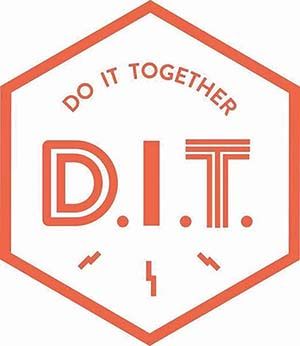On March 24, former RadioShack CEO John Roach was in the IDEA Works offices on Rosedale. He looked around and pointed to a RadioShack Do It Together sign on the wall.
“That might be the last RadioShack sign in Fort Worth,” he said.
Roach, whose career is far more than just RadioShack (Justin Industries, Texas Christian University, just to name two), wasn’t being nostalgic, but reflective.
He spoke March 24 at an IDEA Works event called Great Ideas. I was the interviewer, but I didn’t have to do much. Roach had plenty of stories to tell.
I’ll give you a little flavor of what he said, but you’ve got to transport yourself back to the mid-1970s.
Roach was at RadioShack and he knew there was interest in personal computers. But he wanted to find a company to build one for RadioShack. At that time RadioShack didn’t build many of their own products.
“There was a buyer in RadioShack who bought parts for the stores and he kept getting these little computer newsletters. You’ve got to understand, a computer newsletter in those days was on mimeographed paper, if you know what that is. There were no newspapers, no Internet, no magazines covering the computer industry – no books to speak of. Computers were just that new and unique.”
So Roach and his team sought a company to build a computer:
“We started looking for places to buy some computers that we could sell. Texas Instruments didn’t want any part of it. Digital Equipment, a big computer manufacturer, didn’t want any part of it. No one [overseas] wanted any part of it.
“Most people didn’t really understand digital electronics at that point in time. It became pretty obvious if we wanted a computer, we were going to have to build it ourselves. “
RadioShack, then called Tandy Corp., did just that.
“We got a prototype ready and brought it in. Mr. Kornfield and Mr. Tandy looked at it. Tandy says, ‘We’ll build 1,000 of them and if they won’t sell, we’ll use them for inventory or something at the store level.’”
Roach had his marching orders. He and some other team members went to the first West Coast Computer Fair in San Francisco.
“Nine thousand people paid $14 each to come in and look at … nothing. There was an Apple 1 – if anyone’s ever heard of an Apple 1. A prototype of a Commodore that didn’t work for 2 more years. But there was a whole lot of interest.”
So, on Aug. 3, 1977, Tandy launched its first computer.
“We struggled. The reason was, they didn’t work very well. The engineers had to tune them as they came off the line. We didn’t’ have any customer service.”
Regardless, people started buying the machines; but it was obvious they needed better software. The same buyer that read the computer newsletters said he had read about a guy in Albuquerque who made a really good BASIC software. So Roach said to bring him in.
“He shows up and he makes his pitch. A Microsoft contract today is about like that [several 100 pages] and all he had was a page and a half of paper. So I liked everything he said, except the price. I thought it was too high and told him so.”
“The guy said, ‘Well my dad and I have been role-playing for three or four days, but he didn’t tell me what to say when you said it was too high.’ Well, in the end the laugh was on me, because he got his price.”
The guy, by the way, was Bill Gates, now better known as the founder of Microsoft and one of the richest people in the world.
I’ll share more of what Roach said another time, but as RadioShack rides off into the sunset, I’ll remember one thing Roach said.
RadioShack didn’t always hire the smartest people, Roach said, but they did hire people who worked hard and were passionate about the business. That, Roach felt, was what made the company a success those many years ago.






